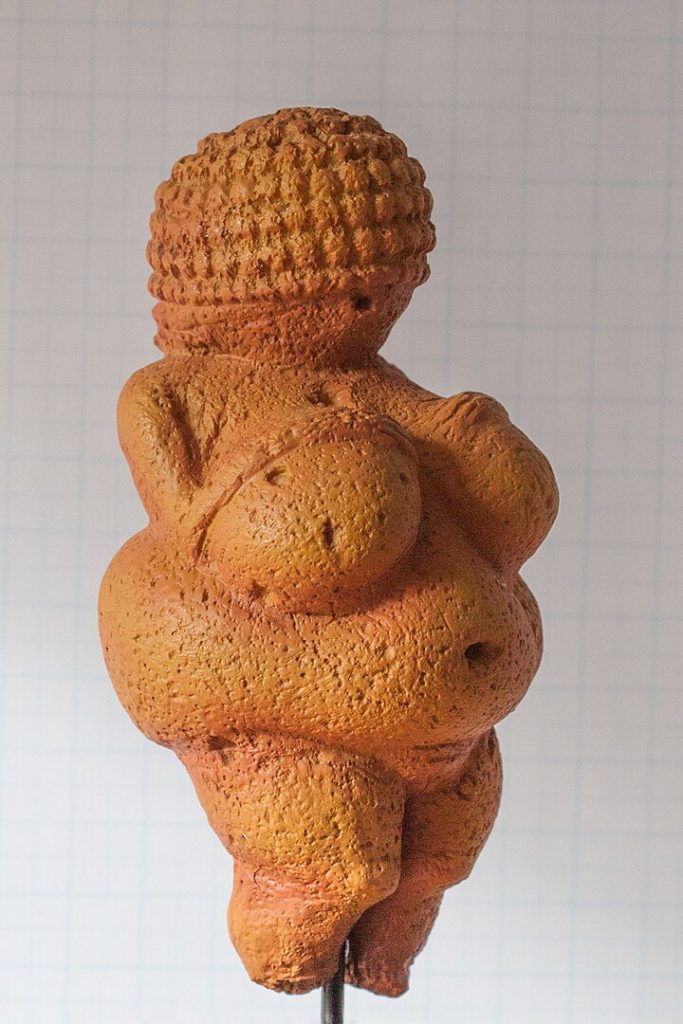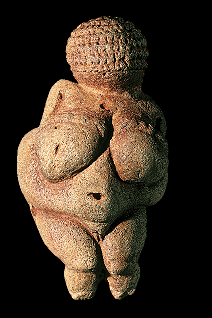
The Venus of Willendorf—one of the most captivating archaeological finds of the 20th century—has been challenging our perceptions of prehistoric art and society for over a century. Discovered in 1908, this tiny yet powerful limestone figure has been dated to roughly 25,000–30,000 years ago, making it one of the oldest known depictions of the human form. But why was it created, and what did it represent to the people of the Upper Paleolithic? As we delve into the mystery, it’s clear that the Venus of Willendorf holds more secrets than answers. So, what makes this tiny figure so significant, and why are we still talking about it today?
The Discovery of the Venus of Willendorf
On a sunny August day in 1908, Austrian archaeologist Josef Szombathy led a dig near the village of Willendorf, located along the Danube River in Austria. This site had already been identified as an important Upper Paleolithic settlement, with artifacts regularly unearthed during local excavations. But no one could have predicted what would be found on that fateful day. As Szombathy’s team sifted through the soil, they uncovered a small but striking figure—a woman with exaggerated curves, carved out of limestone and measuring just over 11 cm tall.
This tiny sculpture immediately caught the attention of the archaeological world. Dubbed the “Venus of Willendorf” for the site of its discovery, the figure was unlike anything that had been found before. Early interpretations speculated that it might be a fertility idol or a representation of an ancient goddess. Given its craftsmanship and the remote time period it came from, the Venus was hailed as a masterpiece of prehistoric art.
Not only was the Venus of Willendorf a significant archaeological find, but it also sparked a wave of excitement in the field of anthropology. At a time when prehistoric discoveries were still relatively rare, this sculpture seemed to offer a glimpse into the minds and cultures of our ancient ancestors. Who created this figure, and why? Could this be evidence of an early matriarchal society, or was it simply art for art’s sake?
What Is the Venus of Willendorf?
At first glance, the Venus of Willendorf appears simple—a small, round-bodied figure with exaggerated hips, breasts, and a pronounced belly. But upon closer inspection, the craftsmanship reveals an understanding of form and texture that is anything but primitive. The Venus is carved from oolitic limestone, a material not native to the area where it was found. This suggests that the people who created it were part of a network that traded or traveled over long distances. Even more intriguing is the red ochre that was discovered on the figure’s surface, indicating that it was once painted, possibly for ritualistic or symbolic purposes.
But what truly sets the Venus of Willendorf apart is its design. The figure lacks facial features, arms, or feet, focusing entirely on the torso and reproductive areas. Many researchers believe this stylization was intentional, emphasizing fertility and womanhood. In fact, the exaggerated proportions—especially the large breasts and hips—have led some to interpret the Venus as a fertility idol, a symbol of the ability to bear children. She’s like the prehistoric version of body positivity, showing that curves were celebrated long before the era of social media!

Other scholars, however, suggest that the Venus of Willendorf might have been more than just a fertility symbol. Could it have been a representation of a goddess or a spiritual figure worshipped by prehistoric peoples? Perhaps it was a symbol of survival, linked to the well-being of the community through the cycle of birth and reproduction. Or maybe it was a form of art created for aesthetic or cultural purposes, offering us a glimpse of the artistic sensibilities of early humans. Whatever its purpose, the Venus of Willendorf’s design reflects a deep connection to the natural world and the importance of fertility in human society.
Theories About Its Purpose: Fertility, Goddess, or Art?
The Venus of Willendorf has inspired a range of theories about its purpose and meaning. Some of the most prominent interpretations include:
- Fertility Symbol: The most widely accepted theory is that the Venus represents fertility. The exaggerated reproductive features—the large breasts, wide hips, and full belly—are thought to symbolize the ideal of motherhood and fertility. In a society where survival depended on the ability to reproduce, a fertility idol would have held great significance.
- Goddess Figure: Some researchers argue that the Venus of Willendorf could have been a depiction of a prehistoric goddess. Many cultures throughout history have revered female deities associated with fertility, nature, and the earth. It’s possible that the Venus represents an early manifestation of this concept, embodying the spiritual beliefs of Upper Paleolithic peoples.
- Portable Art: Another theory suggests that the Venus of Willendorf was a form of portable art. Given its small size, it could have been easily carried by nomadic groups as they traveled across Europe. Some believe that the figure might have been used in rituals or as a talisman for good fortune.
These interpretations aren’t mutually exclusive, of course. The Venus of Willendorf could have been all of these things—a fertility idol, a spiritual symbol, and a piece of art that was cherished by its creator. It’s this ambiguity that continues to fascinate scholars and laypeople alike.
What the Venus of Willendorf Tells Us About Prehistoric Society
Though the Venus of Willendorf is just one piece of the puzzle, it offers valuable insights into the society that produced it. First and foremost, the figure suggests that fertility and the female form were central to prehistoric beliefs. The emphasis on reproductive features might indicate that women held a significant role in Upper Paleolithic communities, perhaps as caregivers, spiritual leaders, or symbols of continuity and survival.
Some scholars have gone so far as to suggest that the Venus of Willendorf points to the existence of a matriarchal society, where women were revered for their ability to bring new life into the world. While this theory remains speculative, it does highlight the potential importance of women in early human cultures.
Additionally, the craftsmanship of the Venus speaks to the artistic skill of its creator. The figure is both stylized and anatomically accurate, suggesting a sophisticated understanding of the human body and the materials available. The use of red ochre, a pigment commonly associated with ritual practices, further hints at the spiritual or symbolic significance of the figure.
Finally, the Venus of Willendorf’s small size suggests that it was meant to be portable, a characteristic that aligns with the nomadic lifestyle of Upper Paleolithic peoples. These groups were constantly on the move, following herds of animals and adapting to changing environments. The Venus could have been a companion on these journeys, a reminder of home, family, and the promise of new life.
The Influence of the Venus of Willendorf on Modern Art
Despite its age, the Venus of Willendorf continues to inspire artists and thinkers in the modern world. In particular, the figure has been embraced by feminist artists who see it as a celebration of the female form in its natural, unidealized state. In contrast to modern standards of beauty, which often emphasize slimness and youth, the Venus represents a timeless ideal of femininity and fertility.
The Venus of Willendorf has also been the subject of countless exhibitions and scholarly studies, where it is often presented alongside modern works that explore similar themes. Artists such as Judy Chicago and Niki de Saint Phalle have cited prehistoric figures like the Venus as an influence on their work, particularly in the context of exploring the roles of women in society and the history of art.
The Venus of Willendorf may be thousands of years old, but its message resonates with contemporary audiences. It reminds us that art is a reflection of society, and that our ancestors, like us, grappled with complex ideas about beauty, power, and survival.
Scientific Discoveries: Red Ochre, Dating, and DNA Clues
While artistic interpretations of the Venus of Willendorf have dominated discussions, modern scientific techniques have added new layers of understanding to this ancient artifact. Radiocarbon dating has placed the Venus at around 25,000 to 30,000 years old, aligning it with the Upper Paleolithic period, also known as the Gravettian culture.
The presence of red ochre on the Venus has led to speculation about its symbolic significance. Red ochre was commonly used in prehistoric burials and rituals, suggesting that the Venus may have been part of a ceremonial practice. Some researchers believe that the ochre represents blood, fertility, or life itself, adding another layer of meaning to the figure.
Recent archaeological digs in the Willendorf area have revealed more about the culture that produced the Venus. DNA studies of ancient human remains found in the region indicate that the people of the Upper Paleolithic were nomadic hunter-gatherers, with a diet primarily composed of meat and plants. These discoveries help us better understand the world in which the Venus was created, offering a glimpse into the daily lives of its makers.
Why Does the Venus of Willendorf Matter Today?
Why, after all these years, do we still care about the Venus of Willendorf? The answer lies in its timelessness. The Venus of Willendorf is not just an artifact from the distant past—it’s a symbol of humanity itself. It speaks to our enduring fascination with the human body, fertility, and the mysteries of life.

In a world where beauty standards are constantly changing, the Venus of Willendorf serves as a reminder that our ancestors had their own ideals of beauty and importance. It challenges us to look beyond the surface and consider the deeper meanings behind the art we create and the symbols we cherish.
As modern viewers, we may never fully understand the Venus of Willendorf’s original purpose, but that doesn’t diminish its impact. Whether it was a fertility idol, a goddess figure, or a piece of portable art, the Venus continues to captivate and inspire. As art historian Kenneth Clark once said, “All great art has the power to reveal something essential about the human condition.” The Venus of Willendorf is no exception.
Key Takeaways
- The Venus of Willendorf, discovered in 1908, is one of the most iconic pieces of prehistoric art, dating back over 25,000 years.
- Its exaggerated female features have led many to believe it served as a fertility symbol or goddess figure in Upper Paleolithic societies.
- The statue’s small size suggests it was portable, aligning with the nomadic lifestyle of prehistoric peoples.
- Modern scientific techniques have provided new insights into its origin, including the significance of the red ochre pigment found on the figure.
- The Venus of Willendorf continues to influence modern art, symbolizing timeless themes of femininity, beauty, and human creativity.
FAQs About the Venus of Willendorf
- When was the Venus of Willendorf discovered?
The Venus of Willendorf was discovered in 1908 near Willendorf, Austria. - How old is the Venus of Willendorf?
The figure is approximately 25,000–30,000 years old, dating back to the Upper Paleolithic period. - What is the Venus of Willendorf made of?
The sculpture is carved from oolitic limestone and was originally covered in red ochre pigment. - What does the Venus of Willendorf represent?
While its exact meaning remains unknown, the Venus is widely believed to represent fertility, femininity, or an early goddess figure. - Where is the Venus of Willendorf today?
The Venus of Willendorf is currently housed in the Naturhistorisches Museum in Vienna, Austria.







